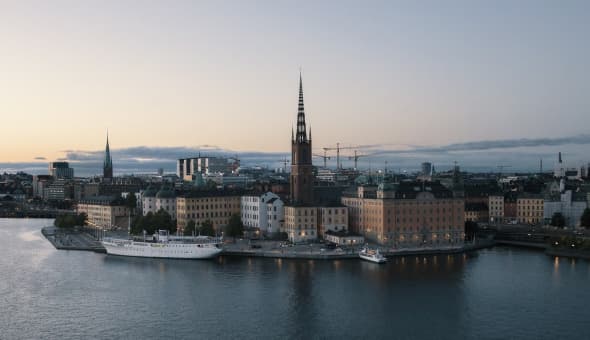Gender Quotas Database

Ethiopia
Eastern Africa
Single / Lower House
Yehizb Tewokayoch Mekir Bete / House of Peoples' Representatives
| Total seats | 472 |
| Total women | 195 |
| Percentage of women | 41% |
| Gender Quota target | |
| Election year | 2021 |
| Electoral system | FPTP |
| Quota type | No legislated |
| Election details | IDEA Voter Turnout - IPU Parline |
Upper House
Yefedereshein Mekir Bete / House of the Federation
| Total seats | 144 |
| Total women | 43 |
| Percentage of women | 30% |
| Gender Quota target | |
| Election year | 2021 |
| Electoral system | |
| Quota type | No legislated |
| Election details | IPU Parline |
| Legal source | Details | |
|---|---|---|
| Quota type: No legislated | Political funding legislation |
Political Parties receive additional flat rate of funding for female candidates - resulting in the share of women in parliament [more than] doubling in the election preceding the introduction of the gender-targeted public funding. |
Voluntary Political Party Quotas*
| Party | Official Name | Details, Quota provisions |
|---|---|---|
| No data available. | ||
* Only political parties represented in parliament are included. When a country has legislated quotas in place, only political parties that have voluntary quotas that exceed the percentage/number of the national quota legislation are presented in this table.
Additional information
Article 54.3 of the Constitution establishes that "Members of the House, on the basis of population and special representation of minority Nationalities and Peoples, shall not exceed 550; of these, minority Nationalities and Peoples shall have at least 20 seats. Particulars shall be determined by law." The quota is for minorities so it is not considered gender quota because it is not focused only in women.
"Several elections were postponed to 2021 in some countries, including Ethiopia due to the COVID-19 pandemic" (IPU 2021).
"[In 2021 a] total [of] 1,976 women were registered as candidates by political parties and six registered as independents. Most political parties set different qualification requirements for candidates running for HoPR and regional council elections. Consequently, more women candidates were registered for regional council elections (22% as compared to 16% for the HoPR). While women constituted some 42%of the PP candidates overall, most opposition parties reportedly struggled to include women candidates in their lists. Some political parties adopted specific gender policies, however, only 13 parties successfully reached the 20% threshold of registered women candidates to qualify for additional funding.
In terms of political incentives and funding 'most opposition parties reportedly argued ‘that the received amounts were insufficient to conduct an effective campaign’ and ‘repeatedly complained about delays in the disbursement of these funds’ (International IDEA, 2018).
Some political parties attempted to implement voluntary gender quotas, however they were not always successful: e.g. EZEMA did not reach 20% of women candidates. Some women advanced after their parties joined the ruling PP: e.g. former leader of SEPDM (part of EPRDF)" (IRI-NDI, 2021)
In 2004 EPRF instituted a 30% quota for women, which was met (and exceeded) over the next several elections: 21.4% women in 2005, 27.8% in 2010, and 38.8% in 2015 (Breuning, M., & Okundaye, G. 2021. Half of the Cabinet: Explaining Ethiopia’s Move to Gender Parity in the Government). The current ruling Prosperity Party which was founded in 2019, is the successor of the EPRF and have adopted the same voluntary party quota (CEPPS Gender Assesment Report, 2020).
Sources
Legal Sources:
Other Sources:
- Parliament of Ethiopia - Link
- Electoral Commission - Link
- M. A. Mohamed Salih, Political Parties in Africa: Challenges for sustained multipleparty democracy. International IDEA 2007
- Inter-Parlamentary Union (2021). "Women in Parliament in 2020 The Year in Review".
- Ethiopian Parliament Website, House of Peoples Representatives
Additional reading
- See the latest updates on Ethiopia on iKNOW Politics
- Hailu, E. F. (2017)."Who Speaks for Whom? Parliamentary Participation of Women in the Post-1991 Ethiopia". Journal of Developing Societies. 33(3), 352-375. doi:10.1177/0169796X17717003
- UN Women. Country Fact Sheet Ethiopia [Last Accessed 2021-10-22]
- Okock, O., & Asfaw, M. (2014). 'Assessment of Gender Equality in Ethiopia: The Position of Ethiopian Women’s Political Representation from the World, Sub-Saharan Africa, and Eastern Africa Ethiopian Civil Service University' Journal of Law, Policy and Globalization. Vol. 28.
- Forum for Social Studies [FSS]. (2012). Democratic change measures, implications and their options, in Ethiopia. [in Amharic]
Explore more resources: Africa | Global
Know about useful additional reading for Ethiopia? Tell us!
Submit feedback
Submit questions or comments about the Data or Tool
How did you find out about this? What do you like about it? What did you expect but did not find in using the Data or Tool?
To see how we handle your personal data, please read our Privacy Policy.
